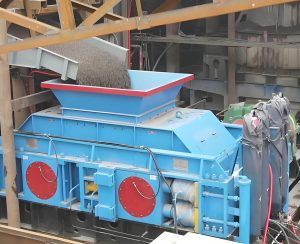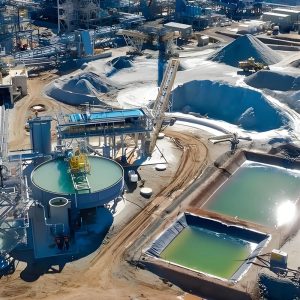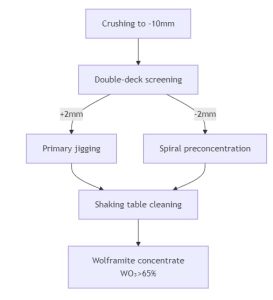Understanding the relationship between process flow and the gold recovery index can make or break mining efforts. Is your gold extraction process truly optimized to achieve the highest recovery rates? The gold recovery index is a measure of how effectively gold is extracted from ores during processing. A well-designed process flow can significantly enhance this index, allowing for more efficient recovery and reducing waste. The success of gold mining hinges on the relationship between workflow and recovery rates. Choosing an appropriate process flow based on the ore’s characteristics can lead to increased gold yields. If you aim for high recovery rates, this relationship should not be overlooked.
Quick View of This Article
What Is The Gold Recovery Index?
The gold recovery index is a pivotal metric for any mining operation. Without understanding this index, how effective can you truly be at extracting valuable metals from ore?
The gold recovery index represents the percentage of gold recovered from the ore during processing. It is calculated by comparing the gold extracted to the total amount present in the ore and is crucial for evaluating the efficiency of mining operations.
Knowing the recovery index helps miners gauge the efficiency of their processes. It serves as a benchmark for evaluating performance. For example, if you process 100 grams of ore containing 10 grams of gold, and you recover 7 grams, your recovery index would be 70%. A high index signals effective procedures, while a low index indicates room for improvement.
What Are The Factors Affecting The Gold Recovery Index?
Several factors play a role in determining the gold recovery index. Understanding these factors is vital. What influences recovery rates during the extraction process?
Factors affecting the gold recovery index include ore characteristics, such as mineral composition and particle size, as well as process parameters like pH levels, contact time, and temperature during leaching. All these variables can either enhance or hinder recovery efficiency.
To dive deeper, let’s explore how these factors interact:
Factor | Description | Impact on Recovery Index |
Ore Characteristics | Mineral type and composition. | Different minerals react differently; some may impede or enhance extraction. |
Particle Size | Size of the ore particles. | Finer particles generally provide better contact for leaching, improving recovery. |
pH Level | The acidity or alkalinity of the solution. | Optimal pH ranges can enhance leaching efficiency; extremes may inhibit recovery. |
Temperature | The heat of the leaching solution. | Higher temperatures can increase reaction rates and enhance recovery. |
Understanding these factors enables miners to optimize conditions for a better recovery index. It’s all about fine-tuning every variable.
How Much Influence Does The Choice of Process Flow Have On The Gold Recovery Index?
Choosing the right process flow is about more than just knowing the ores; it’s about maximizing recovery rates. But just how much does process flow impact your gold recovery index?
The choice of process flow has a significant influence on the gold recovery index. An optimized flow that matches the ore’s characteristics will lead to higher recovery rates, while a poorly designed approach may waste resources and lower overall efficiency.
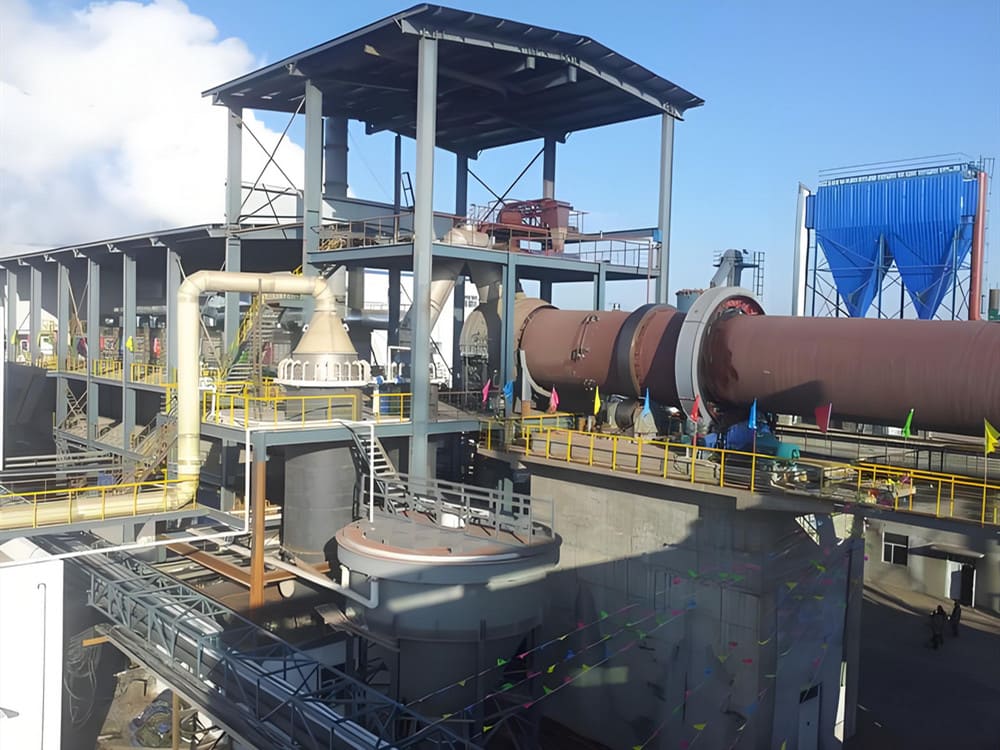
When examining this impact, it’s essential to understand that the process isn’t one-size-fits-all. Different ores may require different approaches. Here’s a look at how the choice of process flow can make a difference:
Process Flow | Description | Potential Impact on Recovery Index |
Gravity Separation | Uses density differences to separate gold. | Effective for coarse gold; may miss finer particles. |
Flotation | Separates minerals based on hydrophobic properties. | Good for certain mineral compositions; requires detailed knowledge of the ore. |
Cyanide Leaching | Involves chemical leaching to extract gold. | Highly effective for low-grade ores; may face environmental concerns. |
A well-planned process flow that aligns with the ore characteristics can dramatically enhance the recovery index. It’s critical to explore all avenues for optimizing these processes.
What Are The Commonly Used Gold Beneficiation Process Fows?
There are many ore dressing process schemes, and the following are commonly used:
Gravity separation + cyanidation process
This process is suitable for processing quartz vein gold-containing oxidized ores. If there is coarse gold in the ore, gravity separation is first carried out to obtain the coarse gold, and then the concentrate is re-selected for cyanidation.
Single flotation process
This process is suitable for sulfide gold-containing quartz vein ores with fine gold particles and high floatability, sulfide ores containing multiple valuable metals, carbon-containing ores… These ores are treated with single flotation, which can maximize the enrichment of gold and other valuable metals into the concentrate and can exclude useless gangue from the tailings. The production equipment is simple, and the cost of ore dressing is low.
Full mud cyanidation (carbon slurry) process
This process is suitable for gold dispersed in quartz gangue in fine or micro-particles, with a high degree of ore oxidation, and does not contain Cu, As, Sb, Bi, and carbon substances. Low cyanide consumption, high leaching rate, high production efficiency, and easy automatic control of the process.
Gravity separation-flotation mixed process
This process is mainly based on flotation and is suitable for gold ores where gold and sulfides coexist closely and can only be recovered by smelting methods. When the ore contains coarse gold, gravity separation is added before flotation to recover the coarse gold.
When the flotation tailings also contain a small amount of difficult-to-float gold-containing sulfide particles (mostly pyrrhotite), it is necessary to use gravity separation equipment such as shaking tables and chutes for enrichment and recovery.
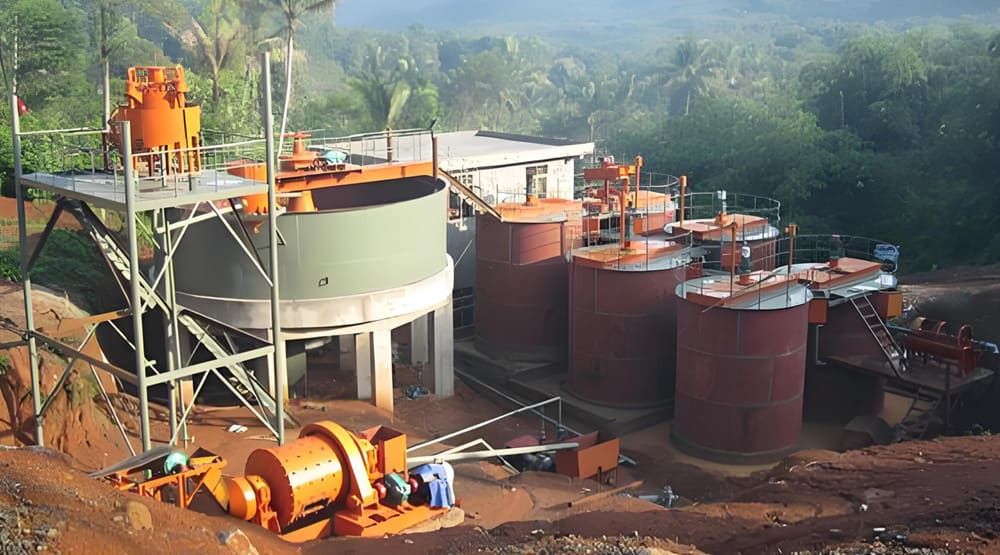
Flotation + cyanidation process
(1) Flotation-concentrate cyanidation process
This process is suitable for processing quartz vein gold-bearing ores and quartz-pyrite gold ores where gold and sulfides coexist closely. After the ore is enriched by flotation, the tailings are discarded. The concentrate is cyanided to recover gold. The cyanide tailings are discarded or used as raw materials for acid production.
Compared with the whole mud cyanidation process, the advantages of flotation-cyanidation are: that the ore does not need to be fully finely ground, which saves power consumption, requires less large-scale equipment for washing, concentration, and stirring, and has a small infrastructure investment.
(2) Flotation-roasting-cyanidation process
It is suitable for treating gold-bearing pyrite with high sulfide content in the original ore and complex gold ores, such as insoluble gold-arsenic gold ores and gold-antimony gold ores.
The flotation concentrate is first roasted to remove arsenic and antimony, which are harmful elements to cyanidation. Cyanidation of the roasted charge can significantly improve the leaching effect.
(3) Flotation-tailings cyanidation process
For minerals that contain elements harmful to cyanidation and are floatable, and gold is only partially combined with these minerals, the flotation-tailings cyanidation process is often used. These ores include: gold-tellurium ore, gold-arsenic ore, gold-copper ore, etc.
First, the elemental minerals harmful to cyanidation are separated by flotation, and then these concentrates are further treated with special methods, such as roasting gold-arsenic concentrates for cyanidation, and sending gold-copper concentrates to smelters, etc. The flotation tailings are leached by cyanidation.
How to Choose The Appropriate Process Flow?
Choosing the right process flow can feel daunting. The choice must be well-informed to maximize recovery rates. What steps should you take to select an appropriate process flow for gold extraction?
To choose the appropriate process flow, conduct thorough analyses such as full element and phase analysis of the ore. Engage professional technicians to provide feasibility recommendations based on this data, and perform testing for various leaching and metallurgy processes. This will lead to the best decision based on efficiency and cost.
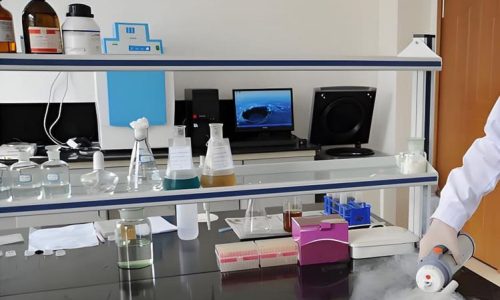
To break down the process of choosing the right flow, consider the following steps:
Step | Action | Outcome |
Conduct Element Analysis | Analyze the chemical composition of the ore. | Identify valuable elements and their quantities. |
Perform Phase Analysis | Study mineral structures present in the ore. | Understanding how different minerals behave. |
Consult Professionals | Seek recommendations from experienced technicians. | Get insights tailored to your specific ore and goals. |
Test Various Processes | Run leaching and metallurgy tests. | Gain empirical data to guide process selection. |
By following these steps, you can set yourself up for success. Making informed choices about the process flow will ultimately boost your gold recovery index and improve operational efficiency.
Conclusion
In conclusion, the relationship between process flow and the gold recovery index is critical for mining operations. By understanding key factors, making informed choices, and leveraging expert recommendations, miners can optimize their processes. The right approach not only improves gold recovery rates but also enhances overall efficiency and competitiveness in the market.

